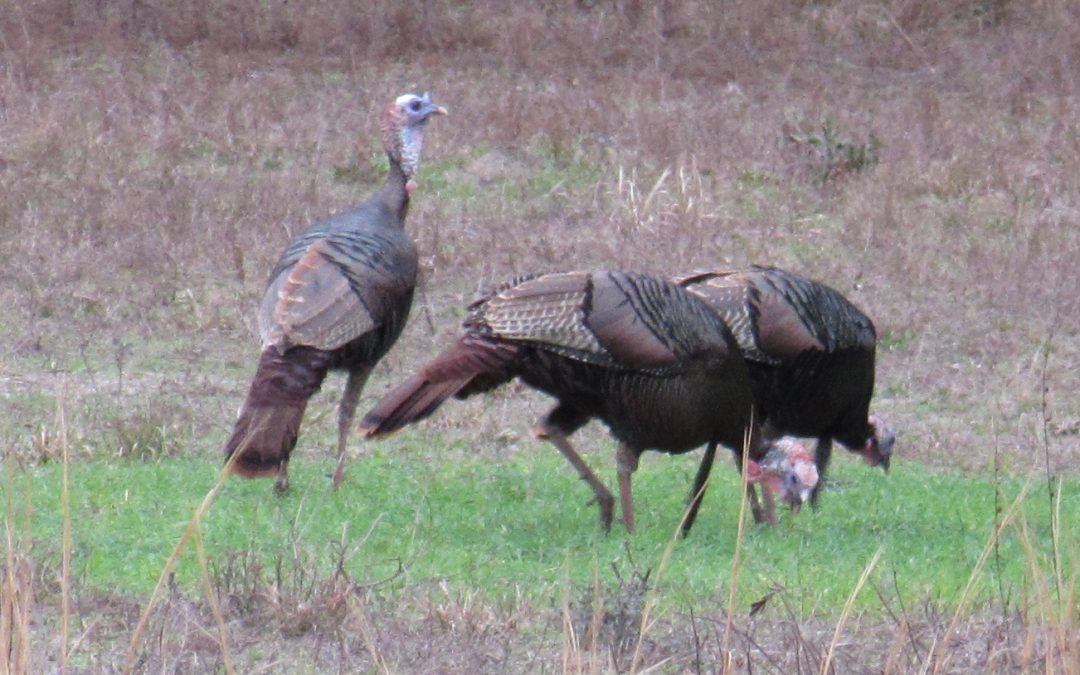
by Jennifer Bearden | Jan 31, 2025
Before you know it spring turkey season will be upon us and now is the time to start planning a killer turkey food plot. Establishing a great food plot takes more than just planting seeds. It takes planning and preparation prior to planting those seeds. The prime turkey food plot is chufas. Chufas are yellow nutsedges that turkeys absolutely love.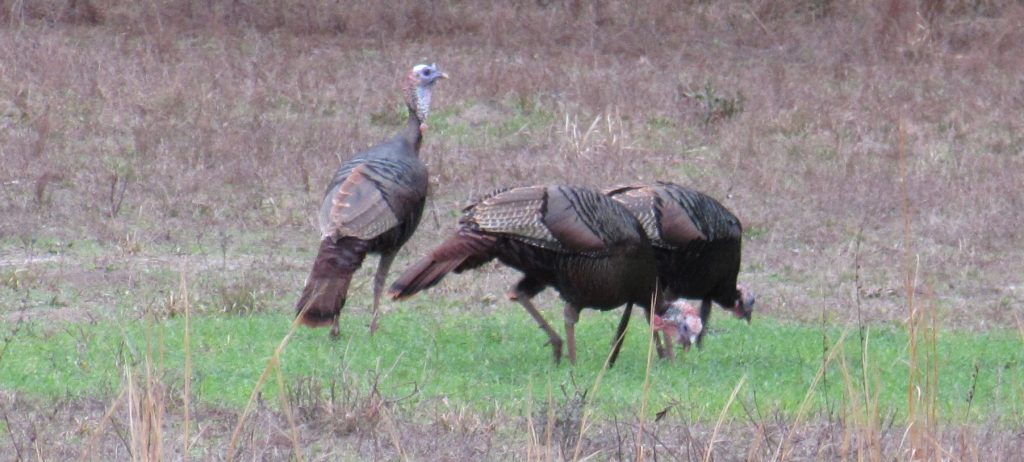
The first step is finding a good spot. A 20ft x 20ft spot with no trees and ample sunlight will work well. You can select a larger spot but that increases the cost of planting. Chufas prefer full sunlight so make sure the area gets 6-8 hours of sunlight per day.
Next step is to take a soil sample from the area. Here’s a video demonstrating how to properly take a soil sample. When you get your soil sample results back, you will want to adjust the pH as necessary. Perform this task well ahead of planting to give the lime time to raise the pH. Chufas grow best with the soil pH between 6.0-7.0.
Now other animals love chufas too, like hogs and rabbits. I wouldn’t plant chufas if you know you have a large population of rabbits or you have a feral hog problem. Reduce those populations before planting chufas.
Other options include plants such as brown top millet and buckwheat. Turkeys love tender young shoots. You can plant these in March ahead of spring turkey season. These plots also will attract insects which the turkeys feed on.
Now we get to the fun part – planting. Chufas can be planted anytime between April and July. They germinate quickly once soil temperatures are above 65º F.. You can plow the area or use a herbicide like glyphosate to kill existing vegetation. For chufas, you can use a pre-emergent herbicide like trifluralin or pendimethalin to help suppress weeds during the growing season.
| Plant |
Broadcast Seeding Rate |
| Chufas |
40-50lb/acre |
| Brown top millet |
20-25lb/acre |
| Buckwheat |
50- 55lb/acre |
I find that packing the soil after broadcasting the seed, either by driving over it or by using a cultipacker, helps with germination as the seeds flourish with a firm seed bed.
Next, fertilize according to your soil test results and enjoy a great spring turkey season.
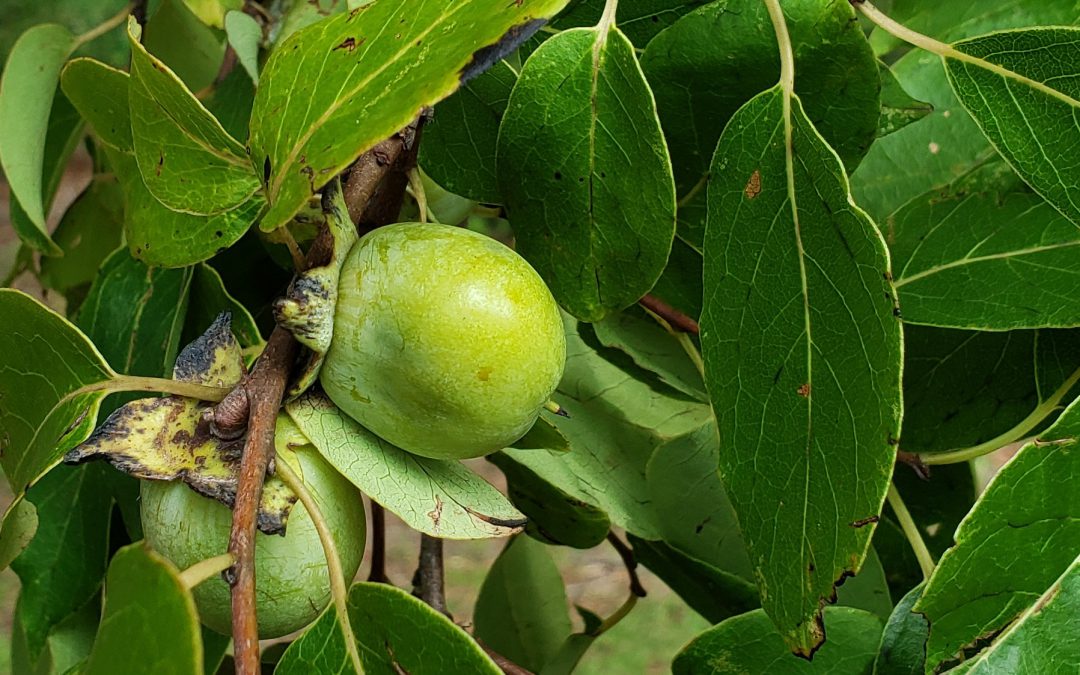
by Mark Mauldin | Oct 10, 2019
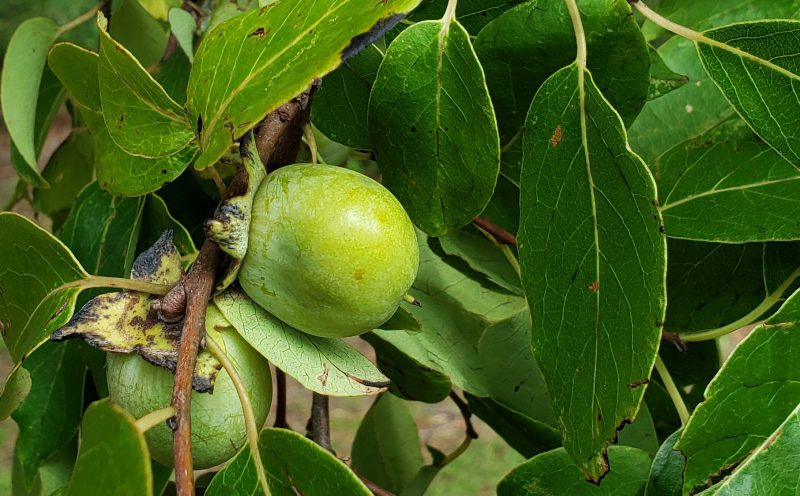
Protecting and promoting plants that produce soft mast, like this wild persimmon, can be a crucial step in improving wildlife habitat. Note: This time of year persimmons will be orange, the picture was taken earlier in the summer.
Photo Credit: Mark Mauldin
Landowners frequently prioritize wildlife abundance and diversity in their management goals. This is often related to a desired recreational activity (hunting, bird watching, etc.).
In order to successfully meet wildlife related management goals, landowners need to understand that animals frequent specific areas based largely on the quantity, quality and diversity of the food and cover resources available. Implementing management strategies that improve wildlife habitat will lead to greater wildlife abundance and diversity.
Herbivorous wildlife feed on plants, mostly in the form of forages and mast crops. All wildlife species have preferences in terms of habitat, especially food sources. Identifying these preferences and managing habitat to meet them will promote the abundance of the desired species.
Herbaceous plants, leaves, buds, etc. – serve as forages for many wildlife species. Promoting their growth and diversity is essential for improving wildlife habitat. Three common habitat management practices that promote forage growth include:
1) Create forest openings and edges; forested areas with multiple species and/or stand ages, areas left unforested allowing for increased herbaceous plant growth.
2) Thinning; open forest canopy allowing more light to hit the ground increasing herbaceous plant growth and diversity.
3) Prescribed fire; recycle nutrients, greatly improve the nutritional quality of herbage and browse, suppress woody understory growth.
Mast – the seeds and fruits of trees and shrubs – is often one of the most important wildlife food sources on a property.
Hard mast includes shelled seeds, like acorns and hickory nuts and is generally produced in the fall and serves as a wildlife food source during the winter.
Soft mast includes fruits, like blackberries and persimmons, and is generally produced in the warmer months, providing vital nutrition when wildlife species are reproducing and/or migrating.
Making management decisions that protect and promote mast producing trees will encourage wildlife populations.
Landowners can make supplemental plantings to increase the quantity and quality of the nutrition available to wildlife. These supplemental plantings (food plots/forage crops and mast producing trees) can be quite expensive and should be well planned to help maximize the return on investment.
Key points to remember to help ensure the success of supplemental wildlife plantings.
- Select species/varieties that are well adapted to the site.
- Take soil samples and make recommended soil amendments prior to planting.
- Make plantings in areas already frequented by wildlife (edges, openings, etc.).
- Food plots should be between 1 and 5 acres. Long, narrow designs that maximize proximity to cover are generally more effective.
Habitat management and other wildlife related topics are being featured this year in the UF/IFAS building at the Sunbelt Ag Expo. Make plans to attend “North America’s Premiere Farm Show” and stop by the UF/IFAS building, get some peanuts and orange juice and learn more about Florida’s Wildlife.
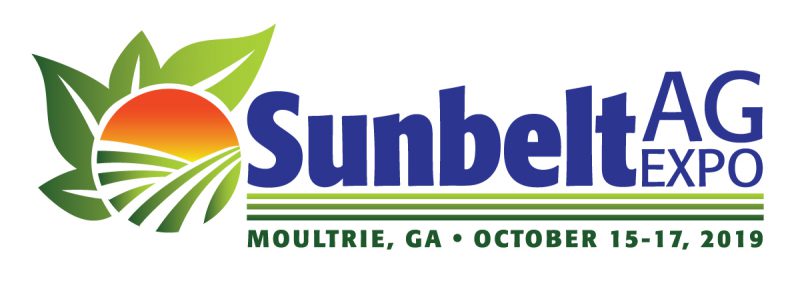 If you have any questions about the topics mentioned above, contact your county’s UF/IFAS Extension Office or check out the additional articles listed on the page linked below.
If you have any questions about the topics mentioned above, contact your county’s UF/IFAS Extension Office or check out the additional articles listed on the page linked below.
EDIS – Wildlife Forages
A significant portion of this article was summarized from Establishing and Maintaining Wildlife Food Sources by Chris Demers et al.
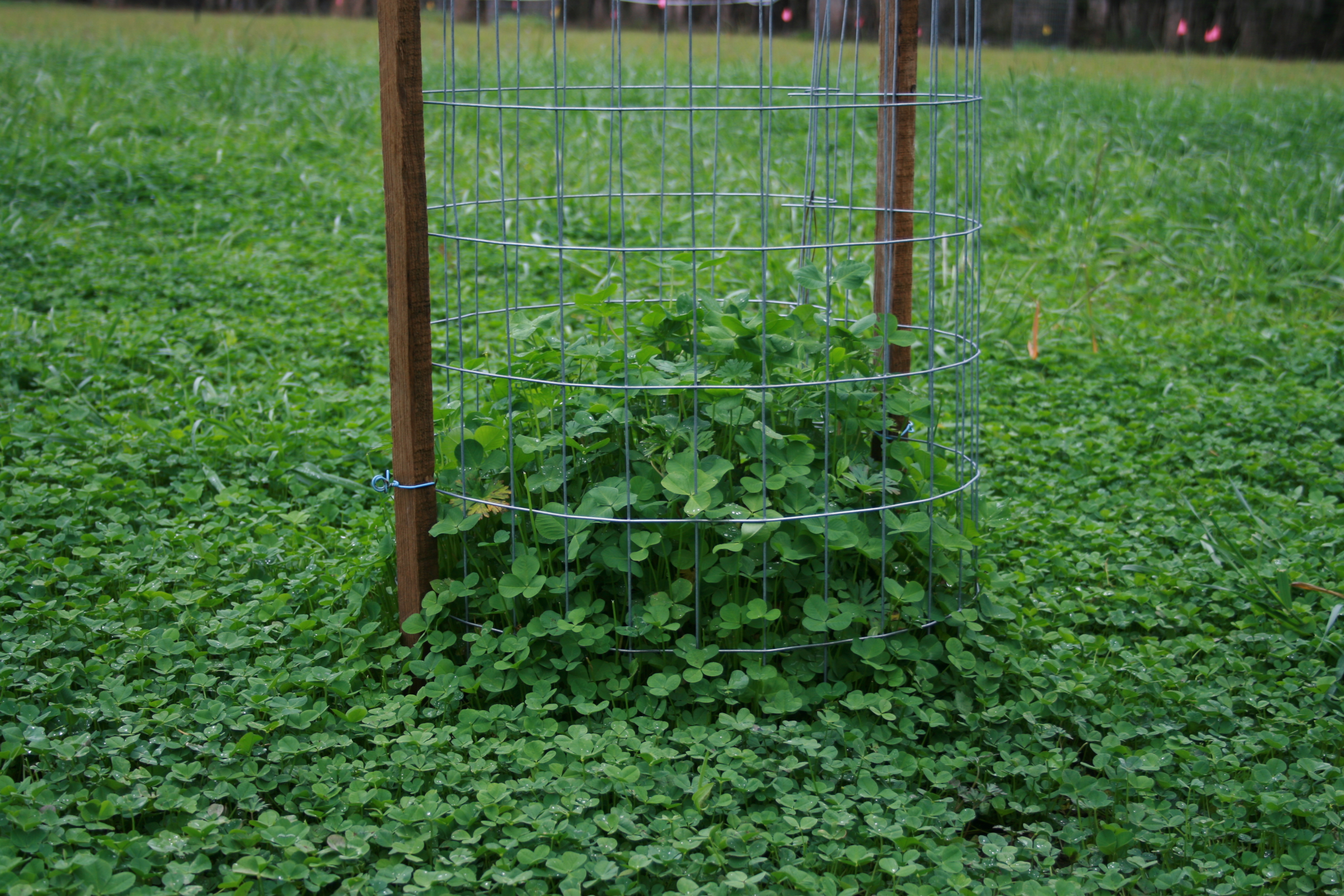
by Jennifer Bearden | Aug 15, 2014
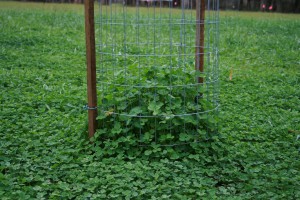
Exclusion cages help us determine how much forage is being produced and consumed. (photo by Jennifer Bearden)
It’s time to start planning your cool season wildlife food plots. Cool season food plots do a great job attracting deer and other wildlife to your property as well as providing a little nutrition. The first step is to choose an appropriate location. Remember wildlife like to stay close to cover but plants also need sunlight. Cool season food plots are generally smaller than warm season food plots (about an acre or so is sufficient). Once you find a suitable location, have your soil tested. Soil test results give you important information like pH, phosphorus levels and potassium levels. In August, perform your soil test so you have more time to adjust your pH. Adjust pH if necessary with lime applications. Cool season forage options include:
- Legumes – arrowleaf clover, crimson clover, ball clover, red clover, white clover, vetch and winter peas to name a few.
- Grasses – ryegrass, oats, wheat, rye, and triticale (a man made cross of wheat and rye).
- Brassicas like kale, turnips and tillage radish
- Forage Chicory
Legumes need to be inoculated with a rhizobium bacteria prior to planting. This will allow the plant to manufacture nitrogen and eliminate the need for extra nitrogen application. The pH range for most of these plants will between 5.5-7.0 but some clovers need a higher pH. I would recommend planting a mixture of these forages. One mixture that had a lot of success in our research plots in Quincy included arrowleaf clover, red clover, crimson clover, white clover, buck forage oats and tillage radish. The target pH for that mixture would be 6.0.
Cool Season Food Plot publication: A Walk on the Wild Side: 2013 Cool Season Forage Recommendations for Wildlife Food Plots in North Florida
by | Jan 3, 2014
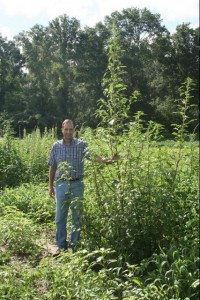
Palmer amaranth can reach heights up 10 feet and signal real trouble for hunters, farmers, and land managers. Loaded with numerous small seeds, mature plants and “offspring” are difficult to control. Photo Courtesy of University of Florida / IFAS
Deer feeders are common in North Florida, and “deer corn” is sold in multiple markets. Cross-roads convenience stores sell it in plain brown bags and big box stores in town sell it in camouflage bags with three color pictures of giant bucks on the front. With the high price of corn in 2012, many hunters saved a few dollars buying “combine run” corn from local farmers or corn screenings from grain elevators. The corn’s no different, however, either product can contain weed seed, especially Palmer amaranth. These weeds can mean big trouble for farmers and hunters.
Palmer amaranth is a species of pig weed, but it’s not your granddaddy’s “careless weed”. It’s taller than either red root pigweed or spiny pigweed, and is becoming resistant to several herbicides, most notably glyphosate (“Roundup”). Amaranth seed are small and plentiful (1 to 1.5 millimeters in diameter) and easily can fit in the nooks and crannies of grain harvesting and handling equipment.
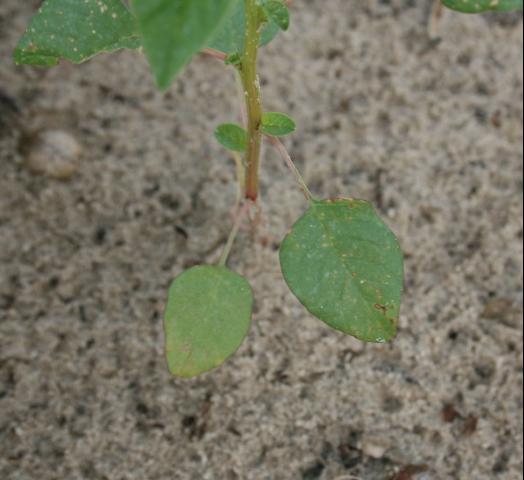
Palmer amaranth first true leaves have small notches on the end and can serve as an identifying characteristic. Photo Courtesy of University of Florida / IFAS.
Once Palmer amaranth seed make it into a deer feeder, there’s a huge opportunity for seedlings to take root in places under the radar of typical scouting and control measures. If these seedlings are herbicide resistant, you’ve done far more harm to the landowner than any savings on corn cost can offset. Conservative estimates indicate herbicide costs have at least doubled due to herbicide resistant weeds. Do your local farmer a real favor; scout and control weeds coming from your deer feeder.
Further information on identifying and controlling Palmer amaranth is available from your county Extension agent or at http://edis.ifas.ufl.edu/ag346
Feeding corn to deer and turkey is permitted by the Florida Fish and Wildlife Conservation Commission as long as the following restrictions are met. “Resident game and wild hogs may be hunted in proximity of year-round game-feeding stations on private lands, provided the feeding station has been maintained with feed for at least six months prior to taking resident game,” and “Wild turkey may not be taken if the hunter is less than 100 yards from a game feeding station when feed is present.” See General Information regarding Feeding Game at http://myfwc.com/hunting/regulations/general-information









